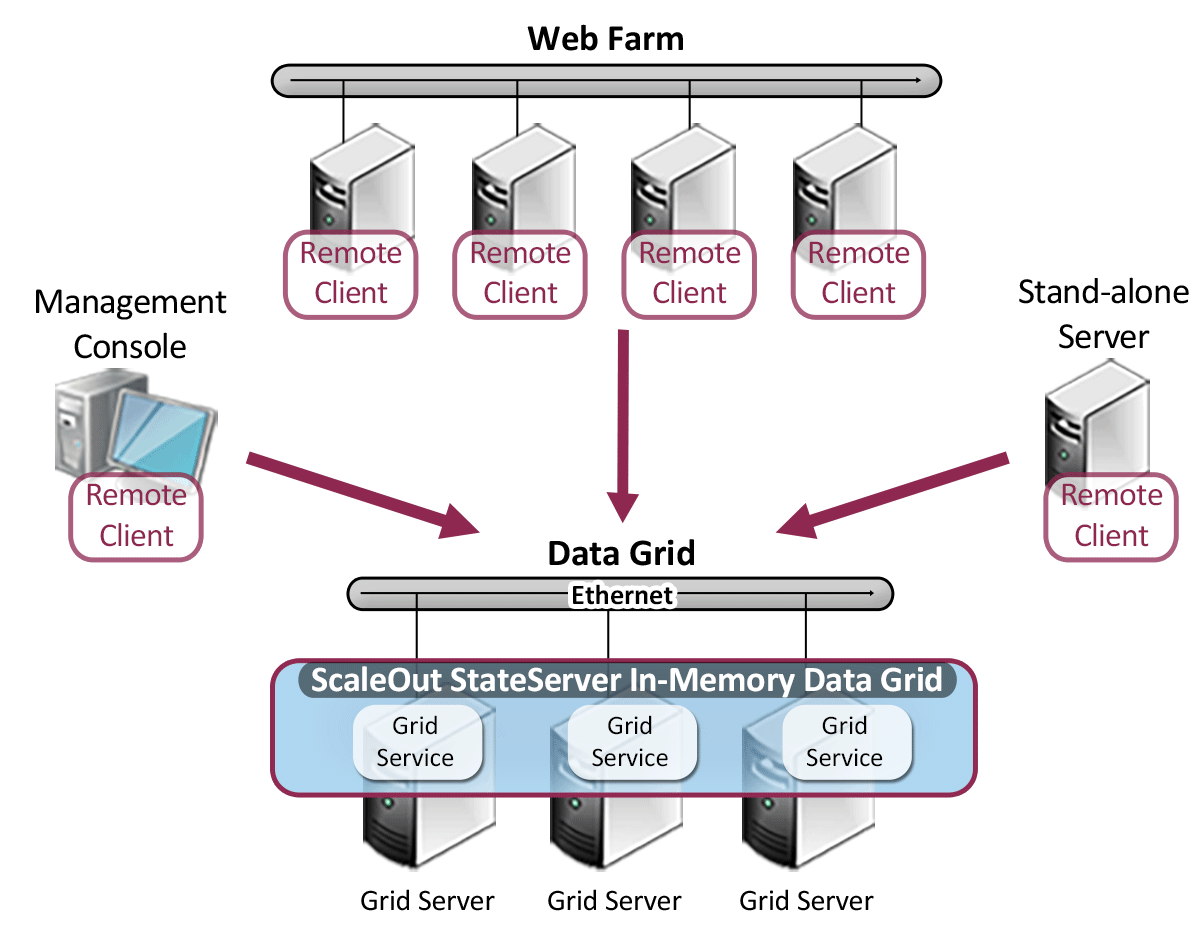Transparently Connect to the Grid
The ScaleOut Remote Client option uses TCP connections and optional secure sockets (SSL) to connect client applications with ScaleOut’s in-memory data grid (IMDG). It ensures that client applications always can connect to the grid even if one or more grid servers are offline. It also automatically tracks the status of the IMDG and directs each client request to the grid server that can most efficiently handle that request.

Using ScaleOut Remote Client to Connect to ScaleOut StateServer
Once a remote client initially has been configured with a list of gateway addresses for the grid servers, ScaleOut Remote Client automatically tries all gateways as necessary to establish connectivity with the IMDG. It then downloads up-to-date information on the membership and status of the grid, including details on where objects within the grid are load-balanced. This information is refreshed whenever the grid’s status changes, enabling ScaleOut Remote Client to direct access requests to the optimal grid server at all times.
Fast Access and Always Connected
To maximize performance, ScaleOut Remote Client uses multiple TCP connections to connect to each grid server. It also incorporates a configurable, client-side cache for deserialized, recently accessed objects. This cache dramatically lowers access times for slowly changing data by avoiding unnecessary network data transfers and object deserialization; this also reduces both network and CPU usage.
If a grid server should fail or be taken offline, ScaleOut Remote Client ensures that client applications and management tools maintain connectivity with alternative IMDG servers. Likewise, when a new grid server is added, it automatically detects the new server and communicates with it. All of these actions are performed automatically and require no intervention by client applications.
